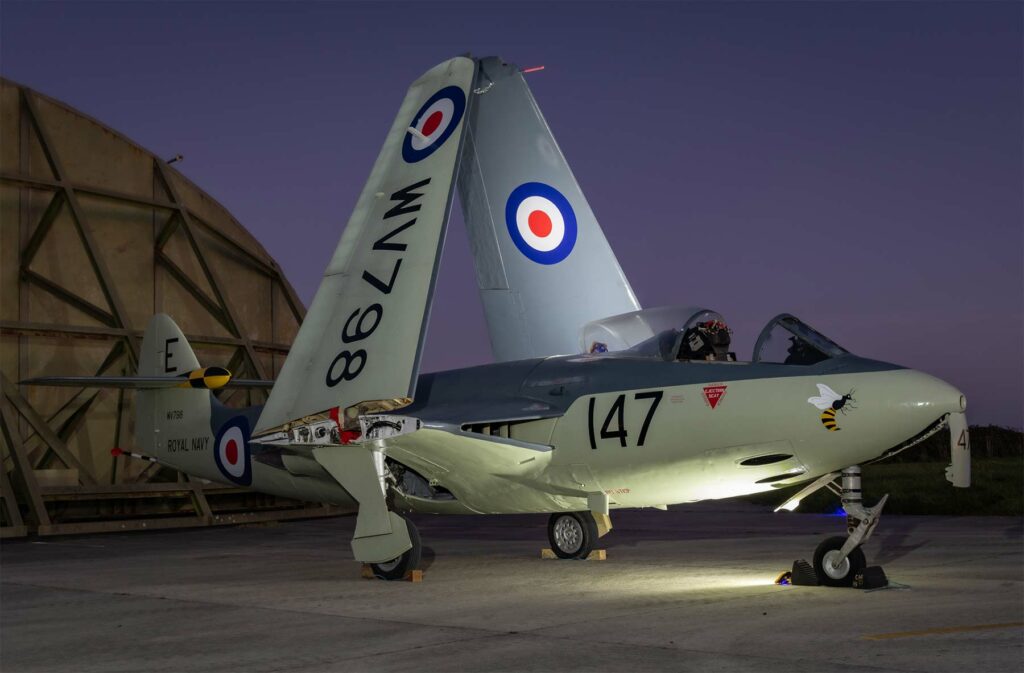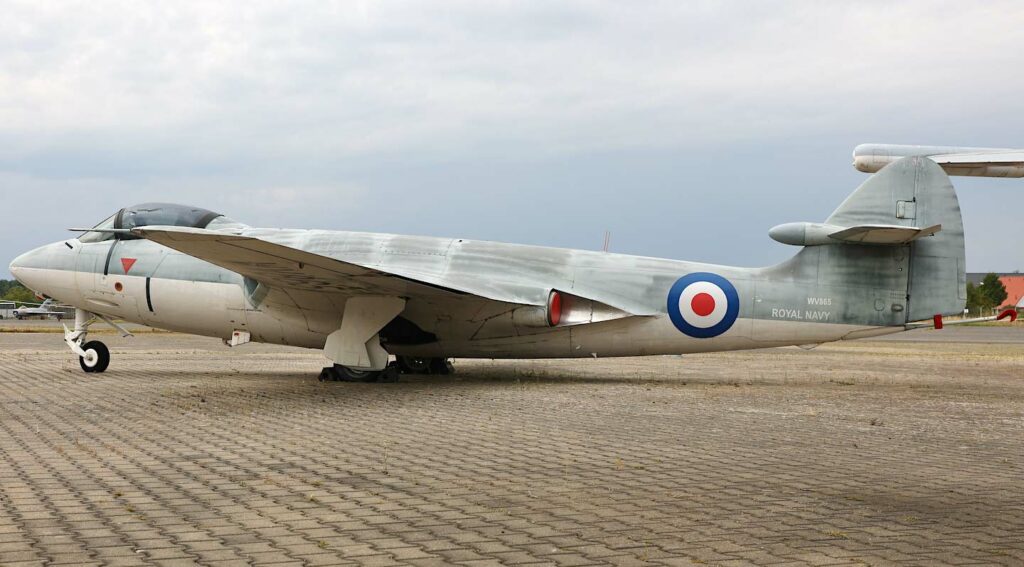The Hawker Sea Hawk, a British naval jet fighter, served prominently in the 1950s with distinct single-engine and straight-wing design.
In brief
The Hawker Sea Hawk was a single-seat, jet-powered fighter aircraft that served as one of the Royal Navy’s primary fleet air arm fighters in the 1950s and early 1960s. Renowned for its straight-wing design, the Sea Hawk was a pivotal transition from propeller-driven to jet-powered naval aviation. It played a crucial role in various naval operations, providing air support, reconnaissance, and air defense capabilities. The Sea Hawk was celebrated for its reliability, ease of operation, and robustness, particularly in carrier operations. It marked an important phase in the evolution of naval jet fighters, setting the stage for more advanced designs in subsequent years.
In the annals of military aviation, the Hawker Sea Hawk holds a special place, especially in the context of naval air power. This article explores the development, design, performance, variants, and military significance of this notable aircraft.

History of the Development of the Hawker Sea Hawk
In the immediate post-World War II era, the rapid advancement in aviation technology necessitated a shift from propeller-driven to jet-powered aircraft in military roles, including in naval operations. The Royal Navy sought a modern jet fighter to replace its aging fleet of piston-engined aircraft.
Developed by Hawker Aircraft and its chief designer Sydney Camm, the Sea Hawk program aimed to produce a versatile, carrier-capable fighter that could perform a range of roles, from air-to-air combat to ground attack.
The Sea Hawk first flew on 2 September 1947. Its development was part of the British effort to maintain naval superiority through technological advancement in the early Cold War period.
The Sea Hawk represented a significant leap in British naval aviation, bridging the gap between the propeller and jet eras. Its introduction into service marked a new chapter in carrier-based air power.
Design of the Hawker Sea Hawk
The Sea Hawk featured a straightforward, practical design. It was equipped with a Rolls-Royce Nene turbojet engine, housed in the fuselage with air intakes on the wing roots and a single exhaust under the tail. The aircraft measured 12 meters in length with a wingspan of 11.3 meters.
The design prioritized ease of maintenance and operational robustness. Its straight-wing configuration provided stability and ease of handling, although it limited the aircraft’s top speed compared to swept-wing designs.
The Sea Hawk’s design reflected a pragmatic approach to jet fighter development during a transitional period in aviation history. It demonstrated that effective jet fighters could be operated from aircraft carriers, significantly enhancing naval air power capabilities.
Performance of the Hawker Sea Hawk
With its Rolls-Royce Nene engine, the Sea Hawk achieved a top speed of 960 km/h (597 mph) and had a service ceiling of 13,716 meters (45,000 feet). Its range was approximately 740 km (460 miles).
When compared to contemporaneous naval jets like the American Grumman F9F Panther, the Sea Hawk held its own in terms of reliability and ease of carrier operations, though it was somewhat outpaced in speed and high-altitude performance.
Variants of the Hawker Sea Hawk
Several variants of the Sea Hawk were produced, including the FGA.6 (Fighter/Ground Attack), FB.3 (Fighter Bomber), and the FGA/RR.101 (a target towing variant). Each variant had improvements in powerplant, armament, and avionics to suit specific operational requirements.

Military Use and Combat of the Hawker Sea Hawk
The Sea Hawk saw considerable action, particularly during the Suez Crisis of 1956, where it conducted ground-attack missions. Armed with cannons and capable of carrying bombs and rockets, it demonstrated versatility and effectiveness in combat. The aircraft served in various navies, including the Royal Navy and the Indian Navy.
The Sea Hawk was operational in several conflicts and was exported to countries like India and Germany. It was eventually phased out and replaced by more advanced aircraft like the Hawker Siddeley Harrier in the UK.
The Hawker Sea Hawk represents a significant era in naval aviation history. As a reliable, versatile jet fighter, it played a vital role in the transition from propeller-driven to jet-powered aircraft aboard carriers. Its operational record, marked by adaptability and effectiveness, underlines its importance in the evolution of naval air power during a critical period in the 20th century.
Back to the Fighter Jet section.